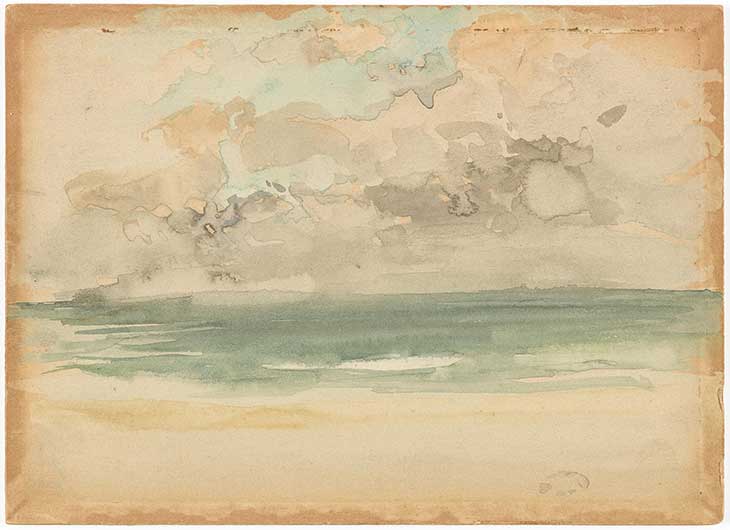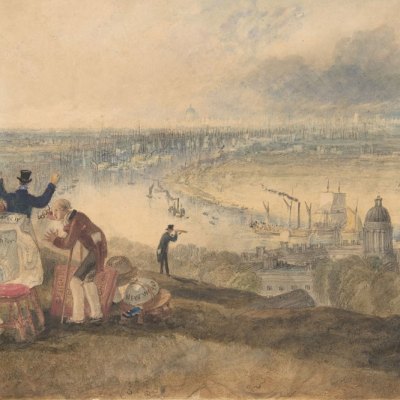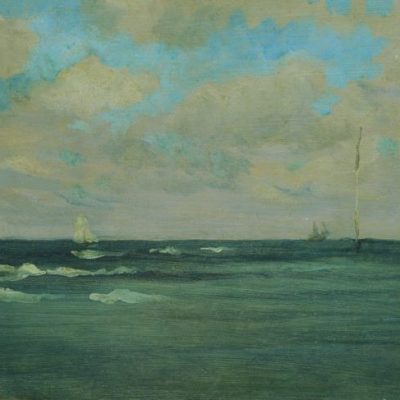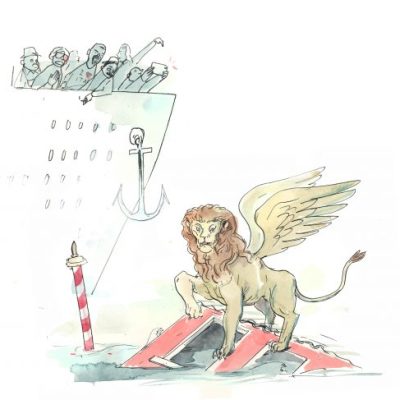The focus of ‘Whistler in Watercolor’ at the Freer Gallery of Art, Washington, D.C., is the world’s largest collection of Whistler watercolours (52), which were amassed by Charles Lang Freer and bequeathed to the Smithsonian in 1906. The exhibition is accompanied by a publication replete with new discoveries about the artist and his methods made by scientists and conservators at the museum.
Whistler painted in watercolour in his youth and was an admirer of Turner’s works in the medium, but after 1880 it would become essential for his financial wellbeing. Bankrupted after the Ruskin trial, he took a commission from the Fine Art Society, London, that sent him to Venice in 1879–80. There, he dabbled in watercolours, no doubt encouraged by the flock of American expatriates (the ‘Duveneck Boys’) who took him in and were mentored by him. In oil, watercolour and lithography, he thinned his medium, affecting a flowing style, better to capture the atmospheric effects of the city by the lagoon. ‘Paint should not be applied thick,’ he said in 1880. ‘It should be like breath on the surface of a pane of glass.’
Chelsea Children (c. 1897), James McNeill Whistler. Freer Gallery of Art

After Whistler’s return to London in November 1880, watercolours became his focus – and would remain so for 15 years. In September 1881 the Leeds Mercury announced, ‘Mr. Whistler is about to surprise both his friends and his detractors appearing in the new character of the watercolour artist.’ He was aged 50 when in 1884 the exhibition ‘Notes, Harmonies, Nocturnes’, featuring a number of works in the medium, opened at Dowdeswell’s Gallery in London. The watercolours were scaled to the size of his prints, making them portable and ideal for selling. These ‘little games’, as he called them, were presented without mounts and framed as if they were paintings, in wide gold-toned moulding, flat with fluting.
Freer became interested in Whistler’s work, purchasing his first etchings in 1887 and then an initial watercolour in 1889. He paid a visit to the artist’s studio in London in 1890; this was the beginning of a lifelong friendship, which saw Freer’s collection of Whistler’s prints, paintings and watercolours continue to grow. In 1902, thanks to a profitable business transaction, he was able to acquire the collection of paintings and works on paper from Henry Studdy Theobald, a longtime Whistler collector, many of which had been in the Dowdeswell’s show of 1884. Then, in 1904, he began discussions with the Smithsonian Institution about donating his entire collection. While Asian art dominates the Freer collection, American art, after successive generations of directors, is now finally gaining parity through exhibitions and publications such as this.
Milly Finch (1883–84), James McNeill Whistler. Freer Gallery of Art

There is little documentation about Whistler’s watercolour technique from his lifetime. That makes the new publication, with its analysis of pigments and insight into his methods, all the more valuable. We learn that Whistler selected for each watercolour a restricted palette of pigments, from which he mixed a range of tints so that, for example, respective tonalities of flesh tones and sand nearly converged. Zinc white is used as an accent as well as for mixing with other pigments. The publication also highlights links between the subjects depicted and the papers and pigments used; we learn that Whistler favoured Prussian blue for his most experimental subject, Amsterdam nocturnes, painted on cold-pressed paper that he rubbed and scrapped for surface effect. Contrary to what might be expected given the immediacy of making a watercolour, microscopic examination reveals that he actually reworked his watercolours, as for example in reducing the fullness of the skirt in his portrait of Milly Finch (1907). Evidence discovered in the ledgers of artists’ suppliers Charles Roberson and Company details the equipment Whistler purchased in order to paint watercolours outdoors: brushes, paper blocks (the largest 10 by 14 inches), and tubes of pigment. And scientific conclusions offer an important reminder that, due to the degradation of watercolour pigments over time, what is viewed today is far less vibrant than when the works were originally executed.
The Ocean Wave (c. 1883–84), James McNeill Whistler. Freer Gallery of Art

In his watercolours, Whistler did not abandon but rather pushed even further the simplicity of his atmospheric style – in which form dissolves in the chaos of the up-close – which had led Ruskin to proclaim that he ‘never expected to hear a coxcomb ask two hundred guineas for flinging a pot of paint in the public’s face’. Indeed, the cover illustration of the exhibition catalogue, a detail of The Ocean Wave (c. 1883), could easily be mistaken for an abstract painting by someone like the Japanese-American Abstract Expressionist Kenzo Okada (1902–82). The notion of Whistler as an artist on the verge of modernity, not given its due in his lifetime, is highly convincing.
‘Whistler in Watercolor’ is at the Freer Gallery of Art, Washington, D.C., until 3 November.



